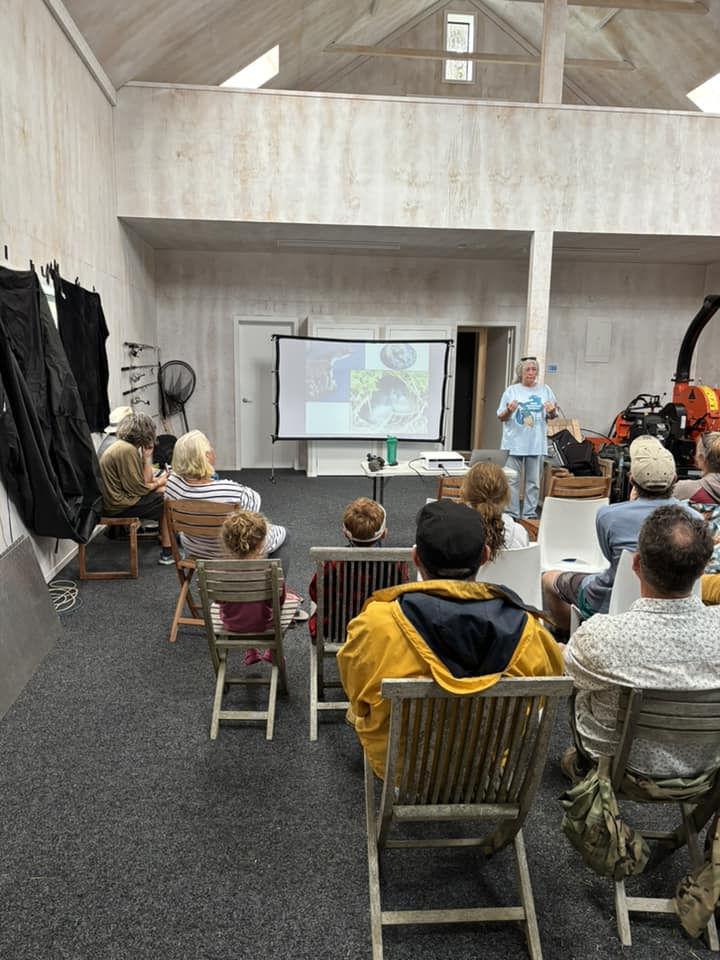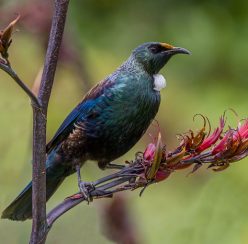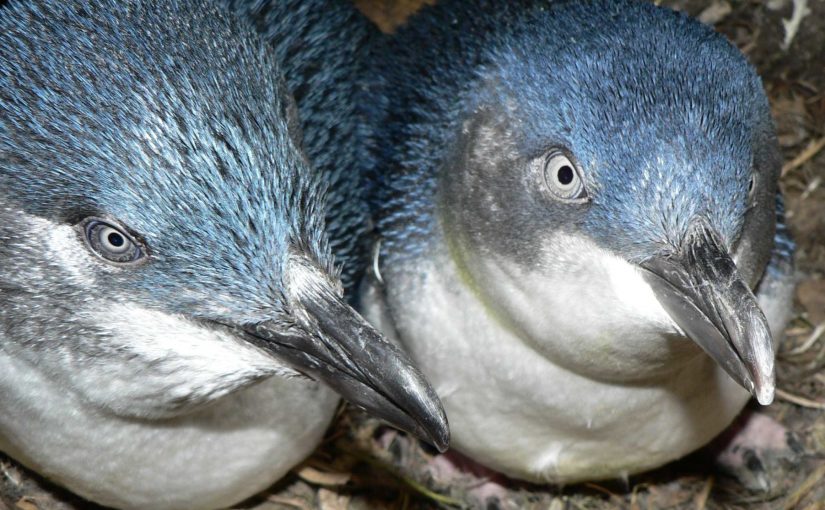We have been trying to get Karen Saunders from Waiheke Native Bird Rescue to visit Rakino for a few years now, but despite the proximity to Waiheke, getting to Rakino can be difficult. Everything needs to align; the weather, Karen’s workload of avian patients, audience numbers on Rakino, a suitable venue, and availability of transport. Many thanks to Waiheke Local Board for providing the funding to cover transport costs!
After a few false starts and postponements we finally achieved a visit this Anzac Weekend. The Frecker’s generously allowed the Boatshed as a venue, Karen duly arrived via Sea Shuttle on a reasonably blustery Saturday, and the Rakino community came down to listen to and watch Karen’s engrossing audio visual presentation.
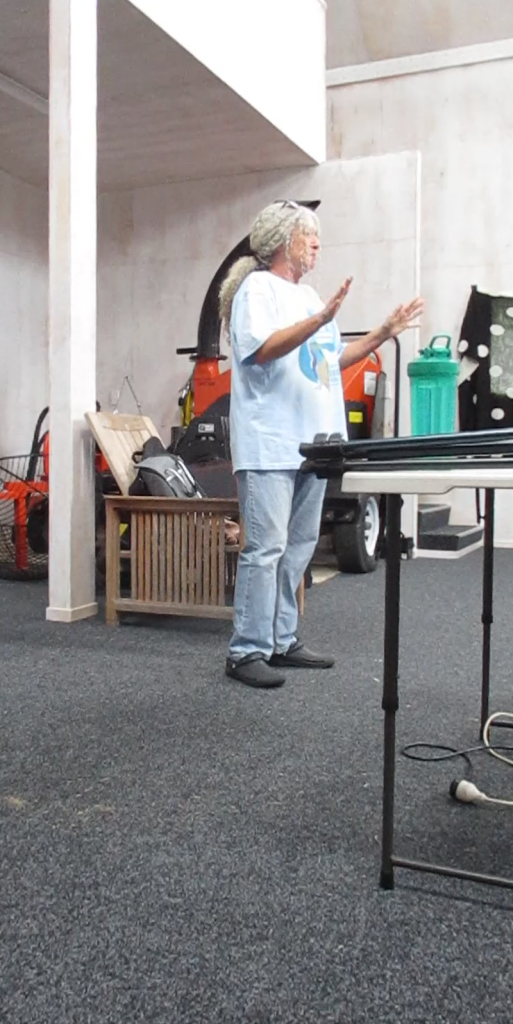
Rakino has a number of kororā burrows and installed nesting boxes, but we don’t really know what the population is. On an early morning low tide you can generally see their tracks in the sandy areas around the island. Woody Bay and Maori Garden Bay are regular spots to see evidence of their presence. They are also occasionally spotted on road, and as they are smelly little critters, their scent will give their occupancy away.
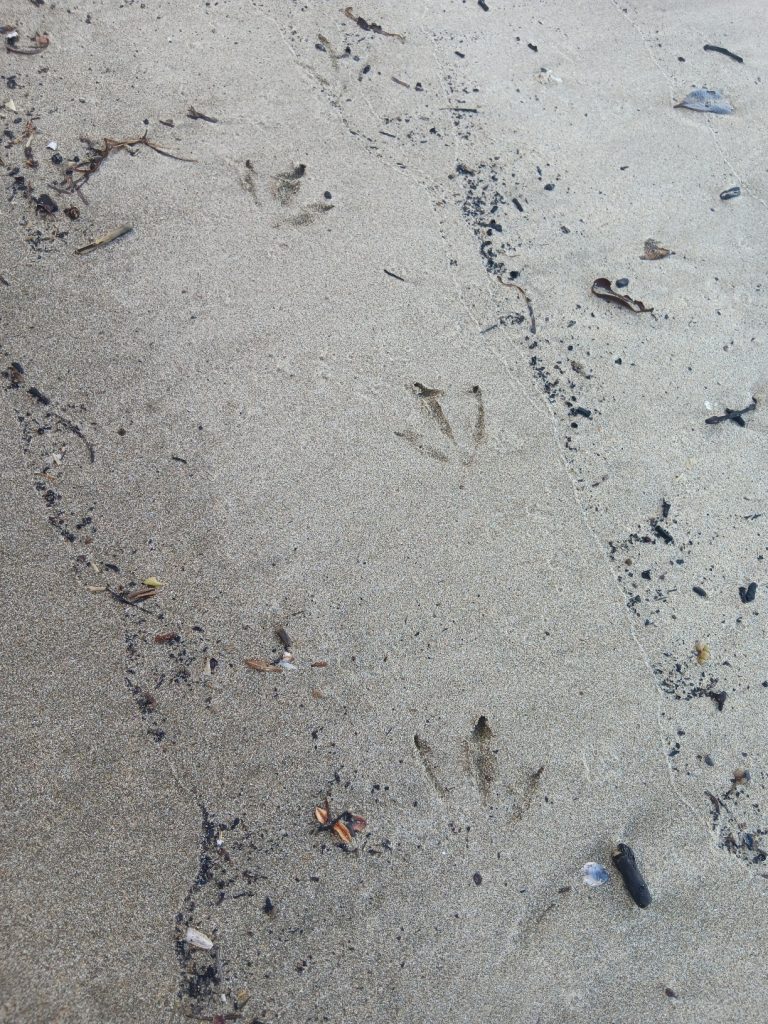
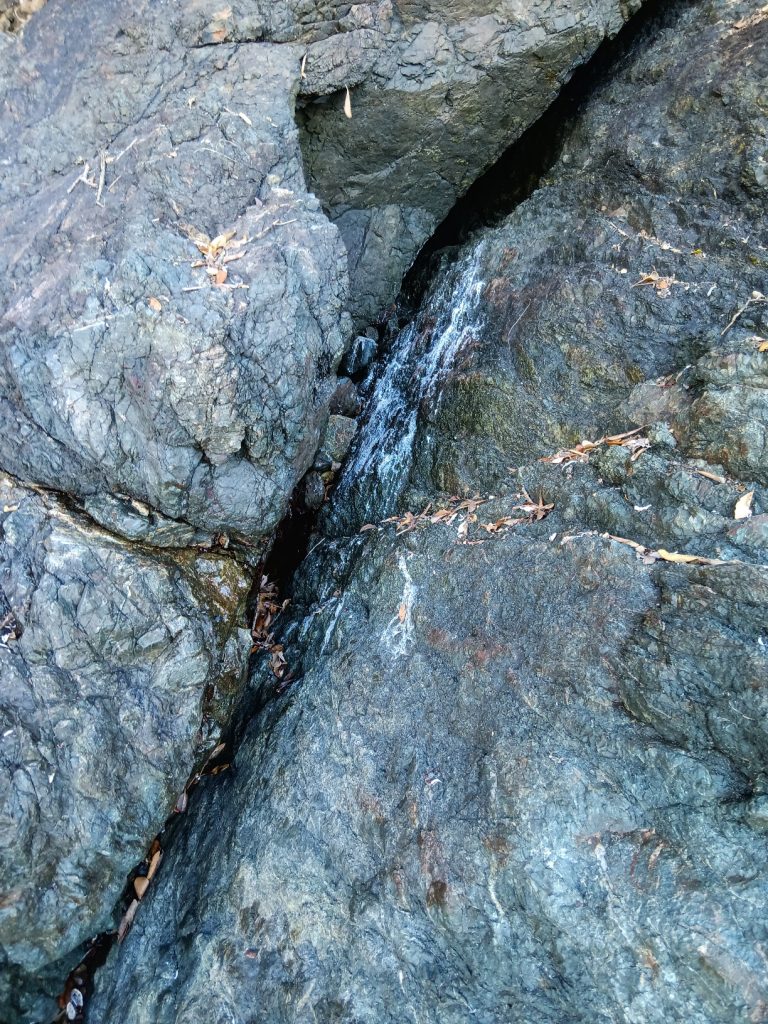
We learned from Karen that the biggest threats to kororā are loss of and damage to habitat, threats to their food supply, and uncontrolled dogs. Karen and her team deal with the consequences of our neglect at Waiheke Native Bird Rescue, where they have the time & cash consuming task of nursing and rehabilitating injured and malnourished kororā back to health.
https://nativebirdrescue.nz/
The one thing we can do to protect kororā immediately is to keep our dogs indoors at night when little blue penguins are on island, and to be aware of where their burrows are. To that end, we have signage ready to be installed in the penguin zones that are easily accessible by dogs, (thank you Waiheke Local Board!) and a long term plan to have a penguin survey done on Rakino. Karen told us that on Waiheke, the areas with penguin burrows where dogs are excluded have more than 8 times as many penguins as areas where there are burrows, but dogs are not excluded. That’s an astonishing statistic.
We also learned about the times of year when they are particularly vulnerable to threats. This is over the summer months, which coincides with high population times on island. They are very vulnerable at nesting time, but also when they are moulting, and cannot go out to sea.
The presentation was followed up with a tuition on trail cam usage. Waiheke Local Board have also provided funding for a trail cam, which is to be set up on an occupied nesting box. We’re anticipating capturing some images of kororā which will be captivating for the Rakino community.
My anticipation is that the Rakino community now have tools and knowledge to protect our resident penguin population from the threats that imperil them, and the understanding that if we lose our little blue neighbours we’ve lost them forever. We are also hoping we can get Karen back again for another visit, and I expect a number of Rakino-ites will be visiting the Bird Rescue Center in the future.
